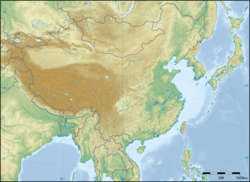The theory of plate tectonics states that the Earth's lithosphere (crust and upper mantle) is made up of rigid plates that "float" on top of the asthenosphere (lower mantle) and move relative to one another. As the plates move, the crust deforms dominantly along the plate margins. Intraplate deformation differs from that respect by the observation that deformation can occur anywhere the crust is weak and not just at plate margins.
Deformation is the folding, breaking, or flow of rocks. There are many different types of crustal deformation depending on whether the rocks are brittle or ductile. The aspects that determine these properties are due to certain temperatures and pressures that rocks experience within the Earth. Therefore, temperature and pressure control deformation processes. Ductile rocks tend to bend, fold, stretch, or flow due to compressional or extensional forces. Brittle rocks, on the other hand, tend to break. The zone where the crust breaks is termed a fault. There are three main types of faults: [1] normal faults, reverse faults and strike slip (transform) faults. All of these are ways the crust can deform is due to the different types of plate margins, which are: [2] divergent boundaries, convergent boundaries, and transform boundaries.
These three boundaries do not always form perfectly and this can lead to a mixed boundary. Mixed boundaries can be a combination of a transform with convergence or a transform with divergence.
This page is based on this
Wikipedia article Text is available under the
CC BY-SA 4.0 license; additional terms may apply.
Images, videos and audio are available under their respective licenses.

